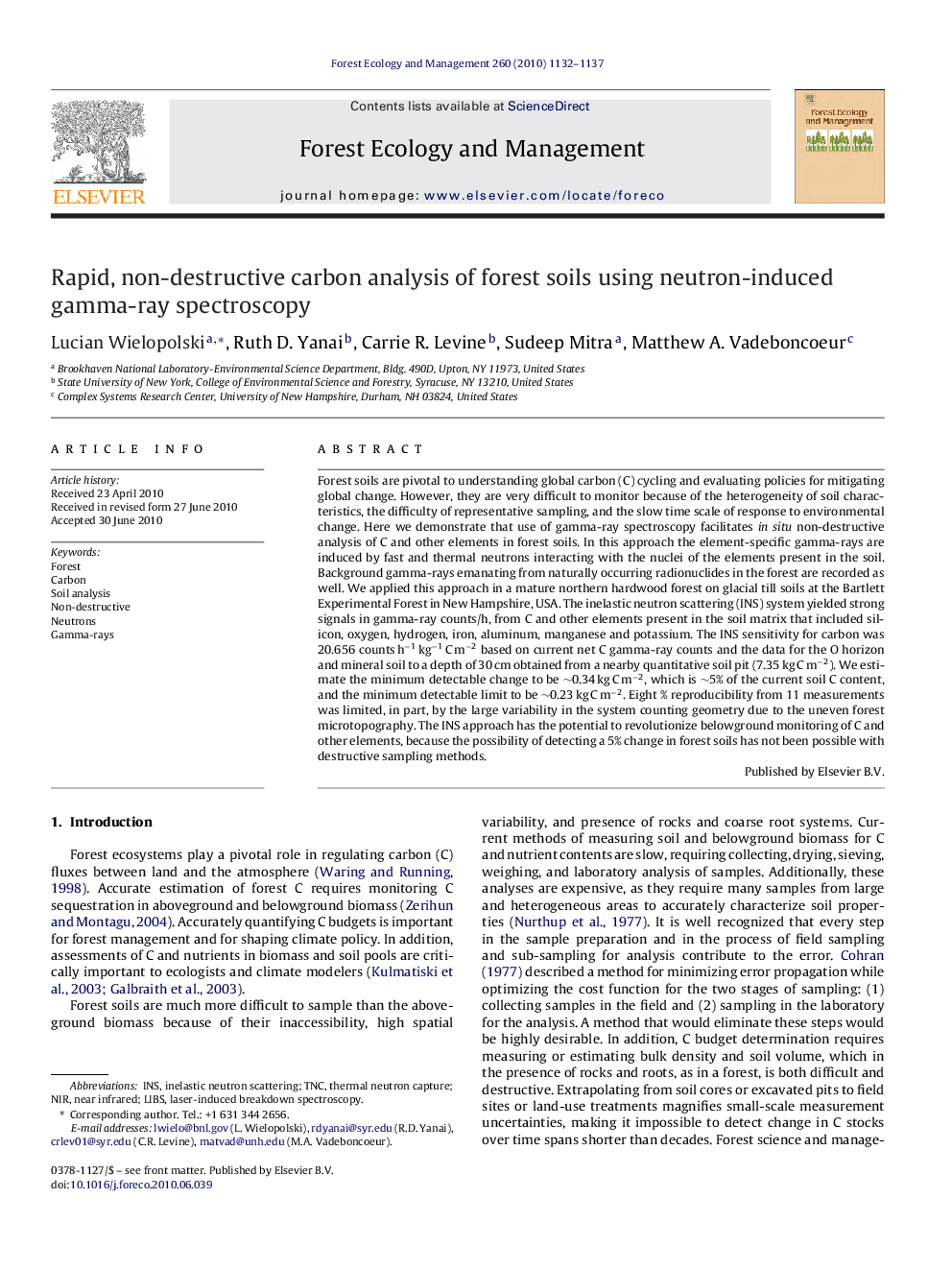| کد مقاله | کد نشریه | سال انتشار | مقاله انگلیسی | نسخه تمام متن |
|---|---|---|---|---|
| 88106 | 159284 | 2010 | 6 صفحه PDF | دانلود رایگان |

Forest soils are pivotal to understanding global carbon (C) cycling and evaluating policies for mitigating global change. However, they are very difficult to monitor because of the heterogeneity of soil characteristics, the difficulty of representative sampling, and the slow time scale of response to environmental change. Here we demonstrate that use of gamma-ray spectroscopy facilitates in situ non-destructive analysis of C and other elements in forest soils. In this approach the element-specific gamma-rays are induced by fast and thermal neutrons interacting with the nuclei of the elements present in the soil. Background gamma-rays emanating from naturally occurring radionuclides in the forest are recorded as well. We applied this approach in a mature northern hardwood forest on glacial till soils at the Bartlett Experimental Forest in New Hampshire, USA. The inelastic neutron scattering (INS) system yielded strong signals in gamma-ray counts/h, from C and other elements present in the soil matrix that included silicon, oxygen, hydrogen, iron, aluminum, manganese and potassium. The INS sensitivity for carbon was 20.656 counts h−1 kg−1 C m−2 based on current net C gamma-ray counts and the data for the O horizon and mineral soil to a depth of 30 cm obtained from a nearby quantitative soil pit (7.35 kg C m−2). We estimate the minimum detectable change to be ∼0.34 kg C m−2, which is ∼5% of the current soil C content, and the minimum detectable limit to be ∼0.23 kg C m−2. Eight % reproducibility from 11 measurements was limited, in part, by the large variability in the system counting geometry due to the uneven forest microtopography. The INS approach has the potential to revolutionize belowground monitoring of C and other elements, because the possibility of detecting a 5% change in forest soils has not been possible with destructive sampling methods.
Research highlights▶ The research demonstrated the utility of an INS system for soil analysis in a forest ecosystem. ▶ To fully implement INS for quantitative soil analysis in forestry, additional characterization of the INS system and better understanding of the system response to forest specific variables such as large roots, boulders, and topography is required. Additional work is required to establish a proper conversion factor of INS readings to conventional units. ▶ The INS system has the potential to detect smaller changes in soil elemental composition than is currently possible with conventional methods.
Journal: Forest Ecology and Management - Volume 260, Issue 7, 31 August 2010, Pages 1132–1137